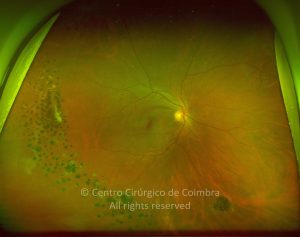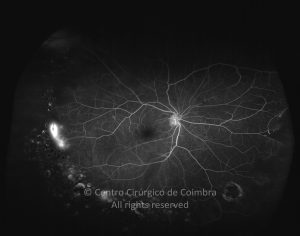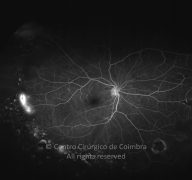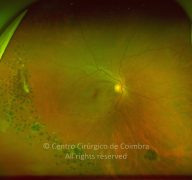Sickle Cell Disease (SCD) is caused by a single point mutation resulting in sickle hemoglobin (HbS). Patients with HbSS are more likely to be affected by retinopathy, thromboembolic complications and renal papillary necrosis. Sickle cell retinopathy develops in up to 42% of individuals during the second decade of life.
The ocular manifestations of sickle cell disease includes occlusive vascular disease of the peripheral retina, retinal neovascularization (“sea fans”), and focal intraretinal and subretinal hemorrhages (“salmon-patch” hemorrhages) at the junction of the perfused and nonperfused retina. These latter hemorrhages resolve and leave either an iridescent patch of hemosiderin or a black patch of hyperplastic RPE (“sunburst” spots) or a hyperpigmented scar. The repetition of hemorrhages leads to worsening of the vitreo-retinal traction, with the potential of causing rhegmatogenous or tractional retinal detachment.









